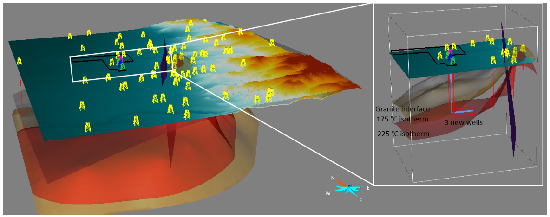Never one to pass up a challenge, Sierra Sellman, a graduate student at DePaul University, said she knew nothing about enhanced geothermal systems (EGS) when she learned in January about the U.S. Department of Energy’s 2019 Geothermal Student Competition.
“I definitely had to Google it,” she said. However, after some research, Sellman, who is pursuing a master’s degree in data science, decided she was game.
Sellman was already looking for a project for her analytics class when her department head, Dr. Daniela Stan Raicu, emailed her about the contest. DOE’s Geothermal Technologies Office (GTO) was inviting teams from universities and high schools nationwide to apply their visualization skills to data collected from deep below the Earth’s surface at the Frontier Observatory for Research in Geothermal Energy (FORGE) site near Milford, Utah.
At FORGE, scientists are exploring the possibilities of EGS — pumping water deep into hot subsurface geological formations that have been fractured and bringing it back to the surface to generate electricity. GTO’s goal is to establish FORGE as the DOE field laboratory where subsurface scientists can test new EGS technologies.
Teams were asked to submit portfolios consisting of five to 10 data visualizations that could aid in the selection of the next FORGE well location. As an environmentalist with a background in geology, Sellman found the challenge appealing. “It has such huge potential,” she said.
For a collaborator, she turned to her friend, Michelle Rodrigue, a data visualization student at Georgia Institute of Technology. At the end of April, after three months of daily work, their entry was chosen as the winner.
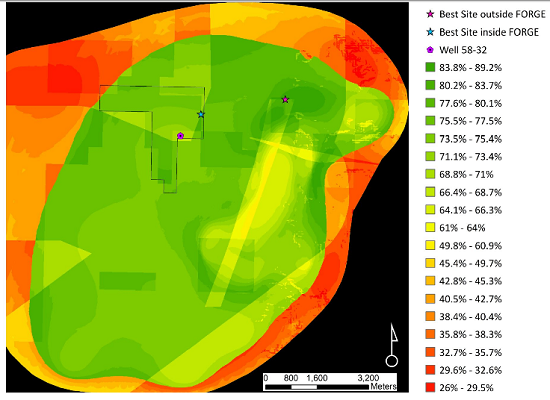
Two years ago, DOE-GTO sponsored an infographic contest that attracted national participation. When funding came through for something in fiscal year 2019, the GTO leadership decided data visualization might be more challenging — and possibly useful to FORGE.
“GTO hopes to inspire a new generation of geothermal scientists and stakeholders, and revolutionize our domestic energy portfolio with the expansion of enhanced geothermal energy,” said the press release from DOE’s Office of Energy Efficiency & Renewable Energy. “In the coming months, the winning teams will have the opportunity to work with the FORGE team on their proposals and discuss ways to carry out their plans.”
“We wanted different sets of eyes looking at this,” said Idaho National Laboratory’s Phyllis King, who coordinated the Geothermal Design Challenge™. “We did not tell them what we wanted their portfolios to look like or what software we wanted them to use.” She estimated it took each team anywhere from 20 to 40 hours to put their portfolios together. “This was not a two-hour project,” she said.
“Our idea was to give them the basic information and get out of the way,” said INL’s Dr. Robert Podgorney, who directs subsurface modeling and simulations for FORGE. “If you make the box too small, they’re going to stay in the box,” he said. The students were actually provided the same data used by the FORGE team in 2018 to decide where the best well locations might be.
Judges for the contest came from national laboratories, universities and elsewhere. Podgorney said they spread the word the old-fashioned way, by digging into their Rolodexes to contact faculty at subsurface science and oil and gas colleges. Influencers and educators from institutions around the nation also helped spread the word about the competition. Using social media, DOE put out its appeal and got a healthy response from colleges and high schools.
Teams were free to use whatever platforms they saw fit to use. In the case of Sellman and Rodrigue, both of whom had backgrounds in geographic information system (GIS), they conducted their analyses using the high-level programming language Python and ESRI’s ArcScene, a visualization application that allows one to view GIS data in 3D. The resulting presentation, “EGS Site Selection Using GIS and Machine Learning,” includes their methodologies as well as graphic animations (e.g. “Thickness of temperature zone in granite.”)
They used 11 provided datasets as well as three external data layers for their analysis. “After extensive research and trial and error, we determined the priority of the eight criteria layers as follows (1 being most important),” they wrote. These were: 1) Cost to drill to 200° 2) Thickness of temperature zone within granite 3) Faults 4) Slope 5) Distance to transmission lines 6) Environmental sensitivities 7) Biologic resources 8) FORGE boundary.
The second-place winners, Bane Sullivan and Adam Kinard from Colorado School of Mines, offered 3D visualizations they felt could assist researchers and scientists to rapidly explore data, communicate findings, and facilitate the reproducibility of results. To do this, they used the Open Mining Format (which enables easy data transfer between mine software programs), ParaView (a data analysis and visualization application), Stanford Geostatistical Modeling Software, and SimPEG, an open source toolkit for simulation and gradient-based parameter estimation in geophysical applications. The team itself developed additional tools.
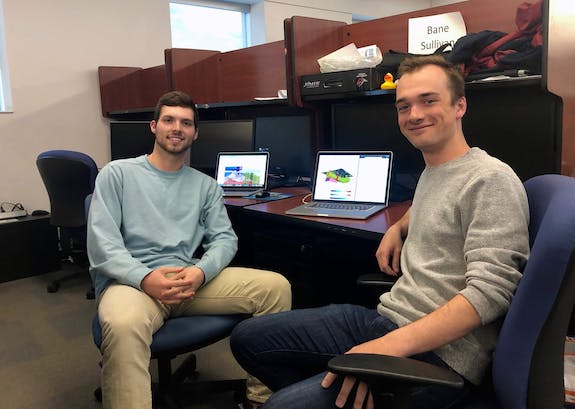

The third team, Ahinoam Pollack and Ayaka Abe from Stanford University, created their portfolio in Tableau, a data visualization tool widely used in the business intelligence industry that simplifies raw data into an easily understandable format. Their portfolio was also geared toward an audience with little knowledge of geothermal, laying out basic concepts of geothermal exploration and well siting.
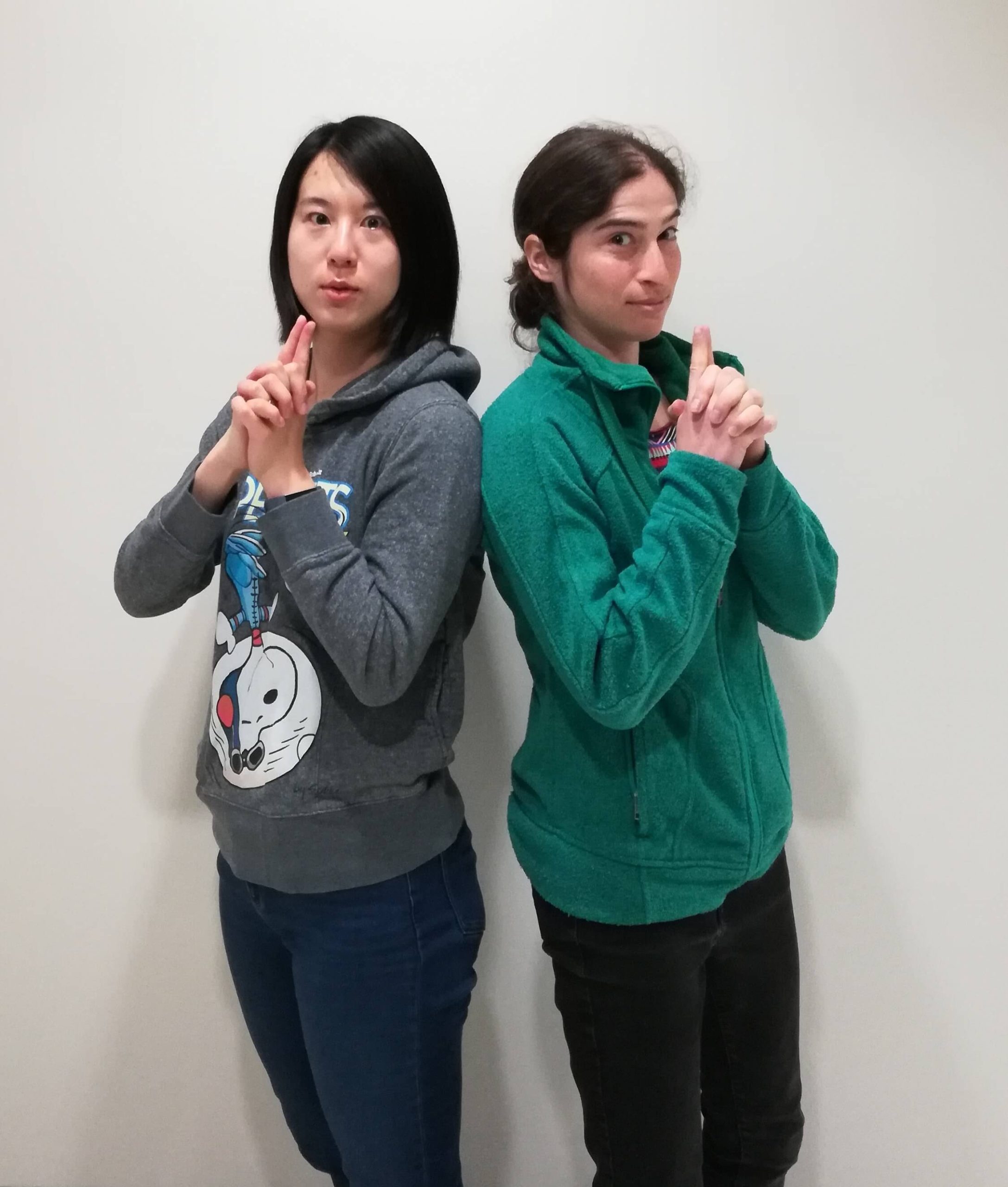
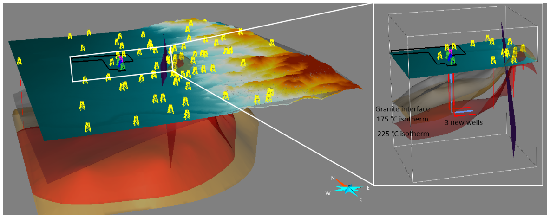
Although the three winning submissions all came from colleges, Podgorney said some of the high school-level entries held their own with college students’ work. Not every team that entered managed to get its submission done in time for the April 10 deadline. Overall, there were participants from 20 states plus Washington, D.C., 65 cities, and 37 universities.
The first test well is likely to be drilled in 2020, as the project enters its next phase. Ultimately, the goal is for FORGE to host geothermal researchers from all over. “This competition is a good lead-in to how we’re going to be doing external research at the site in coming years,” Podgorney said.

